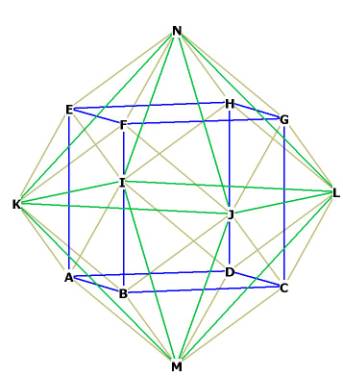|
(2019
final exam assignment) Model final exam answers 2019 (Index) Essay 3: Web Highlights |
 |
Breanna Runnels
High/Low Tech as a Single Genre
Throughout the course of this class,
our discussions have been guided by subgenres within the single genre of
futuristic literature or science fiction. The two subgenres that were mentioned
most often were high-tech and low-tech. Often, these two subgenres would overlap
within stories or at least show a bit of presence in each. Many of the high-tech
stories were trying to gain back low-tech conventions. Many low-tech stories
were trying to advance further into technology. Each of these is special in its
own way, but my favorite stories are the ones that use these two subgenres in
the same story.
Some readers prefer more of a high-tech
science fiction novel. In the essay “High- and Low-Tech Realities: A Comparison”
by Katie Morin, she states that “works of high-tech science fiction are rife
with technology and scientific elements, either real or imagined. An example of
this is William Gibson’s, “Johnny Mnemonic,” where readers are introduced to a
‘virtual reality.’” In Gibson’s story we are introduced to a story of “a world
where technology and humanity have become so far intertwined with one another
that the two become nearly indistinguishable.” Some of the reason why many
people prefer high-tech is due to the augmentations or body modifications that
are present in Johnny Mnemonic. These things redefine what it means to be human,
to a point that humanity is hanging on by a thread and they are often trying to
revert back to their previous low-tech society.
A low-tech society is one that has not
yet made the technological advancements to improve the society. Many readers
prefer this type of science fiction, as it is more realistic and relatable to
the current times. Many of these are post-apocalyptic pieces that are trying to
rebuild society. They have lost the necessity for many things and seem to
survive on the bare minimum. In Timothy Morrow’s “Whether High or Low: Humans
will Adapt”, he talks a bit about these lost traits when he says, “ In “Speech
Sounds”, the protagonist Rye lives in a world which, because of a terrible
illness, most people have lost the ability to talk. Although Rye can still
speak, she keeps that ability secret in order to not stand out in this
post-apocalyptic world. Rye had to learn and adapt to her environment, and learn
the gesture language which evolved from the chaos of society not being able to
communicate.” People are always adapting and changing to meet the needs of their
environment or to do their best with what their environment gives them. Many
also find dissatisfaction with the high tech society they’re thrown into, like
the father figure in “The Onion and I”.
Commonly, stories are a combination of
high and low tech elements, that create the perfectly evolving society. These
elements work well together to create a contrast that seems relevant to our
technologically evolving world of today. For stories like these to work, the
technology elements must be beneficia but not helpful enough to bring the
characters away from low-tech. Anari Oliver describes this perfectly in her
essay “Dissatisfaction in High-Tech
Futures: Low-Tech equals comfort”. She states that “Drapes and Folds delivers a
blend of both high and low tech. Both Diana and Pearl live in a high-tech world,
but throughout the story; we see them doing everything possible to salvage bits
and pieces of the past.” Though they want to advance, they still seek the
comfort of the things from their past, like fabric. They can also long for
non-material things like speech, as we see in “Speech Sounds” by Octavia Butler.
Oliver also states that “Throughout the narrative, we see Rye struggle with the
death of her children and her inability to effectively communicate with others…
We learn that she could talk all along, but she acted as if she couldn’t in
order to blend in. It is also evident that Rye gains a new sense of hope and
sees some purpose in this chaotic world.” There is usually hope at the end of
all of these narratives, but often a hope for becoming new again is found in
low-tech pieces.
High
and low-tech are the most common subgenres found throughout science fiction and
can be found throughout other genres of literature as well. Longing for the past
is not foreign, but neither is hoping for the advancement of the future. These
two work on opposing sides just as well as they work together, and that is not
often found. My favorite part of deciphering and analyzing the works this
semester and in these essays was deciding which kind of future it was and how
that effected the rest of the story.



